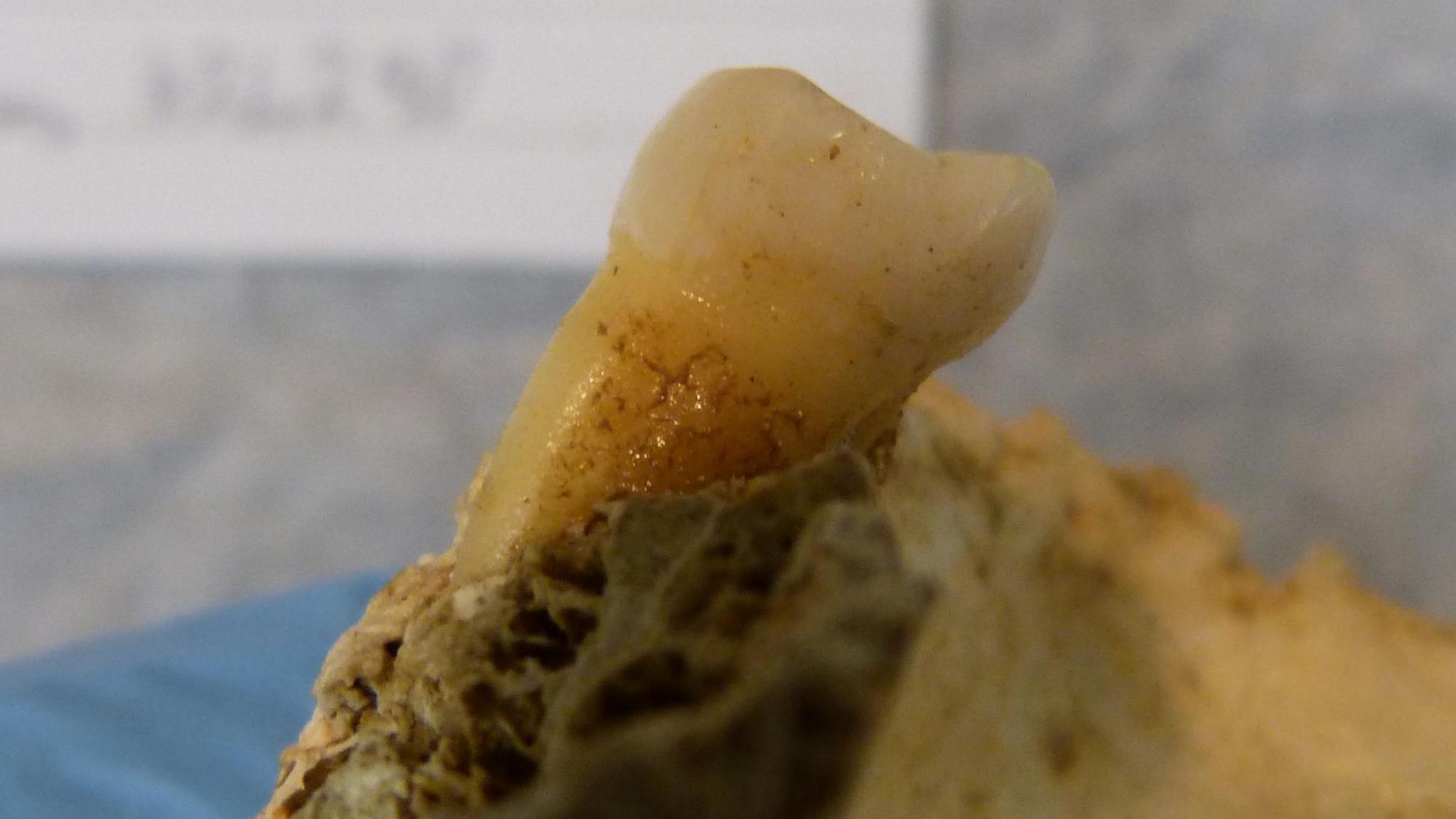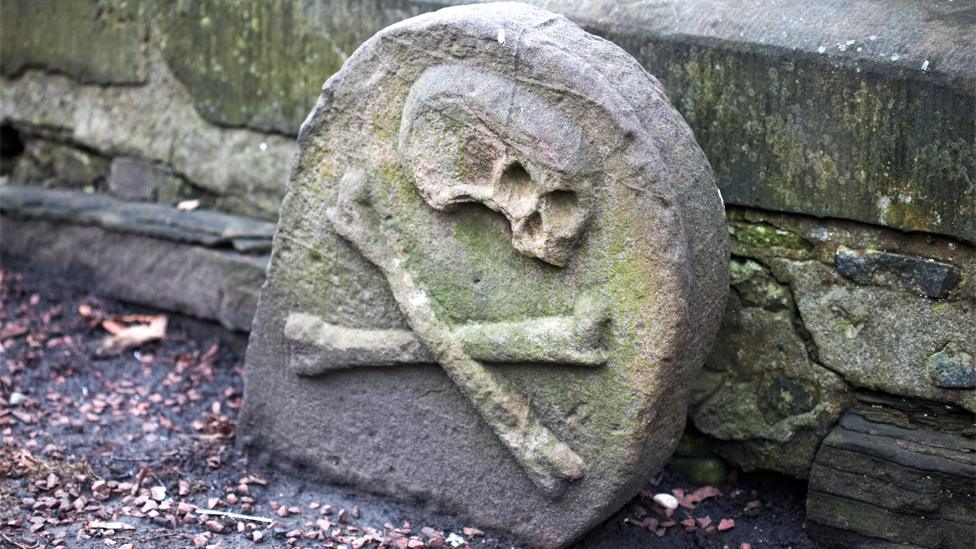Prehistoric teeth used to map infectious diseases

Researchers said the oldest sample dated back 37,000 years (not pictured)
- Published
Researchers across three universities are using prehistoric teeth and bones to provide new knowledge of present-day infectious diseases.
The joint project between the University of Oxford, the University of Copenhagen and University of Cambridge, is based on DNA analyses of bones and teeth from 1,313 individuals who lived across Europe and Asia from the Early Stone Age, about 12,500 years ago, up to about 200 years ago.
They said that might have an impact on the development of vaccines.
Other new insights have also been made into the emergence of zoonoses - diseases transmitted from animals to humans, such as plague.
Professor of evolutionary biology Eske Willerslev led the project together with associate prof Martin Sikora and prof Astrid Iversen, who is from the University of Oxford.
"In addition to providing information on historical conditions related to infectious diseases, the mapping also provides a deeper understanding of a number of these diseases that can still affect humans today," he said.
The study uses specialised method to analyse prehistoric disease DNA.
It allowed researchers to successfully map a catalogue spanning 214 known human pathogens.
The researchers said the oldest sample dated back 37,000 years.
Prof Iversen said that according to their analyses of ancient human remains, zoonoses "really took off" about 5,000 years ago.
"Zoonoses first became a major problem for humans when we started keeping animals together in large herds and living close to these animals - eating their meat and drinking their milk," she added.
"This meant that the animals could more easily infect each other, and that the risk of them infecting humans increased."
The researchers said that approximately 70% of all new infectious diseases discovered in recent years could be transmitted from animals to humans.
Known zoonoses include salmonella, rabies and MRSA.
Researchers said the rise of zoonoses also showed that "the way we live has a major impact on which pathogenic microorganisms we are exposed to" and that "zoonoses are not a static phenomenon".
Get in touch
Do you have a story BBC Oxfordshire should cover?
You can follow BBC Oxfordshire on Facebook, external, X (Twitter), external, or Instagram, external.
Similar stories
- Published31 May

- Published27 March 2024

- Published16 June 2022
